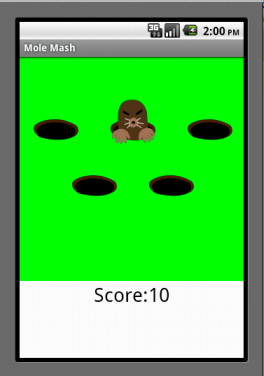Mole Mash Mac OS
TURBOMOLE has been designed for robust and fast quantum chemical applications
Mole Mash Mac Os Download
- all standard and state of the art methods for ground state calculations (Hartree-Fock, DFT, MP2, CCSD(T), …)
- very fast molecular and periodic DFT codes
- very efficient Coupled-Cluster-F12 implementation
- excited state calculations at different levels (full RPA, TDDFT, ADC(2), CC2, CIS(D), …)
- geometry optimizations, transition state searches, molecular dynamics calculations
- various properties and spectra (IR, UV/Vis, Raman, CD)
- fast and reliable code, approximations like resolution of identity (RI) are used to speed-up the calculations without introducing uncontrollable or unkown errors
- parallel version for almost all kind of jobs
- free graphical user interface
Apikey - API key used to authenticate requests to the mole API. Dnsaddr - IP address used to respond to DNS queries. Dbconn - SQLAlchemy database URL. Default is a SQLite db in the root directory sqlite:///mole.db. Staticresponses - list of DNS static response key/value pairs. Webport - configure the listening web port. A DMG file is a Mac OS X system disk image file. Just as the ISO file use in Windows system installations, the files with DMG extension also use on Mac systems. Apple Mac OS X uses the files with.dmg extensions to install a software. If we explain what is the DMG file briefly, the DMG file extension only is used on the Apple MacOS systems. Mac OS Prerequisites: Mac OS X 10.6 and newer The Mac OS version of TmoleX is distributed as a single file called TmoleX45MacOS.dmg. To install TmoleX, simply double-click on TmoleX45MacOS.dmg and follow the installation instructions. After installation, TmoleX.
Initially TURBOMOLE has been specially designed for UNIX workstations as well as PCs and efficiently exploits the capabilities of this type of hardware. Meanwhile, TURBOMOLE runs on almost all kinds of hardware and systems, from standard Windows or MacOS Notebooks up to massivley parallel supercomputers. Most users run TURBOMOLE on Linux PCs, either local multi-core systems or clusters.TURBOMOLE consists of a series of modules; their use is facilitated by various tools and a graphical user interface TmoleX. Almost all time consuming parts of TURBOMOLE are parallelized for SMP/multi-core systems and/or for clusters using standard MPI.
TURBOMOLE has been specially designed for UNIX workstations as well as PCs and efficiently exploits the capabilities of this type of hardware. Meanwhile, TURBOMOLE runs on almost all kinds of hardware and systems, from standard Windows or MacOS Notebooks up to massivley parallel supercomputers. Most users run TURBOMOLE on Linux PCs, either local multi-core systems or clusters.TURBOMOLE consists of a series of modules; their use is facilitated by various tools and a graphical user interface TmoleX. Almost all time consuming parts of TURBOMOLE are parallelized for SMP/multi-core systems and/or for clusters using standard MPI. - Low memory and disk space requirements by usage of direct and semi-direct algorithms with adjustable memory and disk space: Run larger applications on existing hardware.
- Full use of all finite point groups (unique feature in Quantum Chemistry: exploit symmetry of all point groups like D5d, Oh, Ih,… get a speed up of up to 120 for Ih)
- Efficient integral evaluation
- Stable and accurate grids for numerical integration of DFT functionals
- Various methods for ground and excited state calculations and properties
Key methods
- Restricted, unrestricted, and restricted open-shell wavefunctions
- Density Functional Theory (DFT) including most of the popular exchange-correlation functionals, i.e. LDA, GGA, hybrid, meta-GGA, double-hybrid fucntionals.
- Hartree-Fock (HF) and DFT response calculations: stability, dynamic response properties, and excited states
- Two-component relativistic calculations including spin-orbit interactions for all exchange- correlation functionals
- Second-order Møller-Plesset (MP2) perturbation theory for large molecules
- Second-order approximate coupled-cluster (CC2) method for ground and excited states
- Second-order coupled-cluster with triples correction CCSD(T) method for ground state energies
- Treatment of Solvation Effects with the Conductor-like Screening Model (COSMO)
- Novel developments like DFT+Dispersion corrections, explicitly correlated basis set for CCSD (F12) included
- Universal force field (UFF)
Mole Mash Mac Os X
Key properties
- Structure optimization to minima and saddle points (transition structures)
- Analytical vibrational frequencies and vibrational spectra for HF and DFT, numerical for all other methods
- NMR shielding constants for DFT, HF, and MP2 method
- Ab initio molecular dynamics (MD)
DFT and HF ground and excited states
- Efficient implementation of the Resolution of Identity (RI) and Multipole Accelerated Resolution of Identity (MARI) approximations allow DFT calculations for molecular and periodic systems of unprecedented sizes containing hundreds of atoms
- Ground state analytical force constants, vibrational frequencies and vibrational spectra
- Empirical dispersion correction for DFT calculations (including the latest DFT-D3 version from 2010)
- Eigenvalues of the electronic Hessian (stability analysis)
- Frequency-dependent polarizabilities and optical rotations
- Vertical electronic excitation energies
- Transition moments, oscillator and rotatory strengths of electronic excitations, UV-VIS and CD spectra
- Gradients of the ground and excited state energy with respect to nuclear positions; excited and ground state equilibrium structures; adiabatic excitation energies, emission spectra
- Exited state electron densities, charge moments, population analysis
- Excited state force constants by numerical differentiation of gradients, vibrational frequencies and vibrational spectra
Mole Mash Mac Os 11
MP2 and CC2 methods
- Efficient implementation of the Resolution of Identity (RI) approximation for enhanced performance
- Closed-shell HF and unrestricted UHF reference states
- Sequential and parallel (with MPI) implementation (with the exception of MP2-R12)
- Ground state energies and gradients for MP2, spin-component scaled MP2 (SCS-MP2) and CC2
- Ground state energies for MP2-R12
- Excitation energies for CC2, ADC(2) and CIS(D)
- Transition moments for CC2
- Excited state gradients for CC2 and ADC(2)